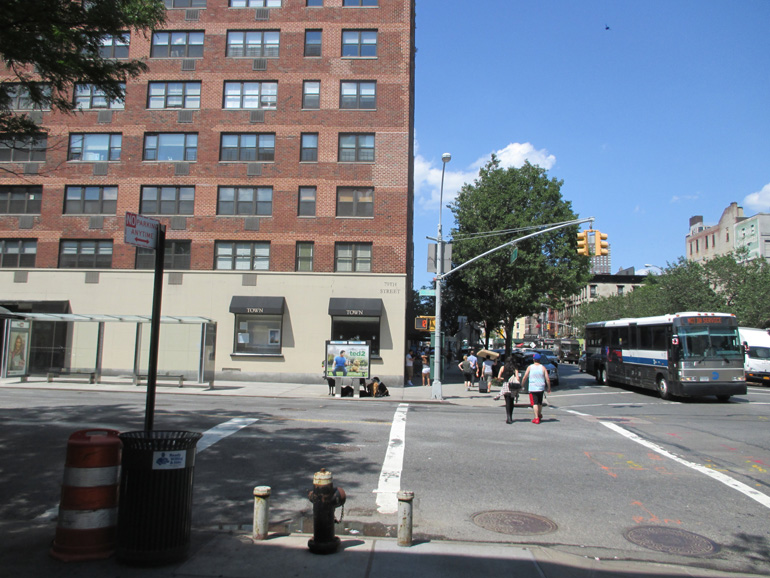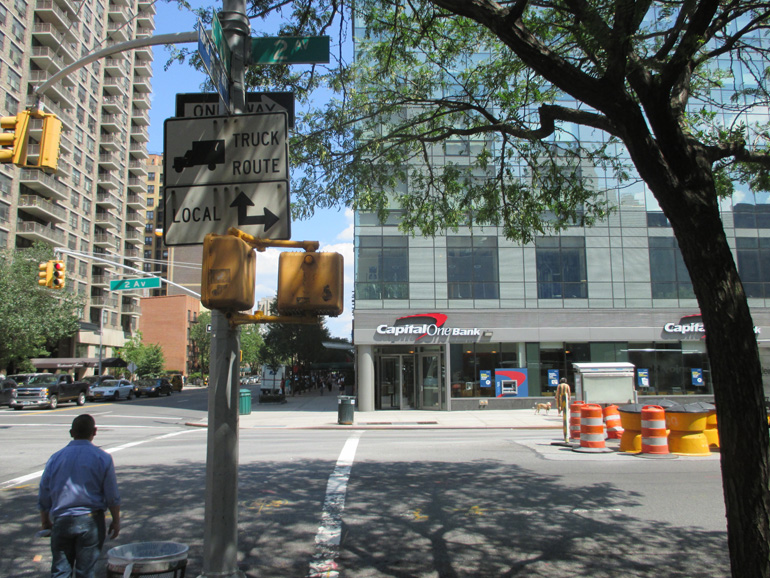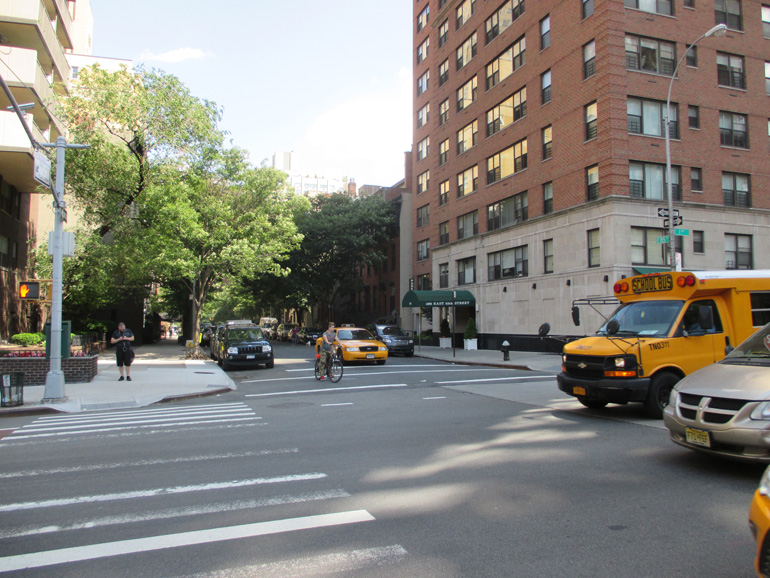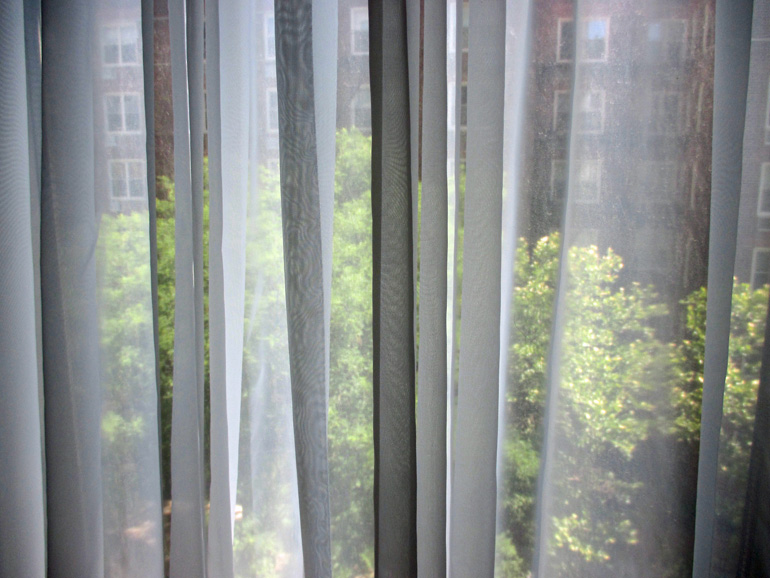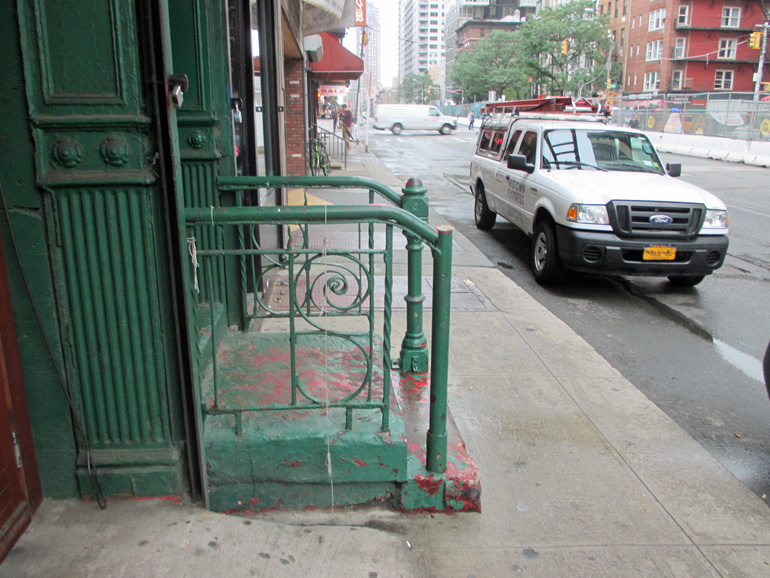Reading Note:
How He Does It
30 June 2015
Tuesday, June 30th, 2015
But, first:
Greece and Puerto Rico are giving us rich lessons in one of the problems of democracy. All of the debt now coming due was signed on to by duly elected officials, none of whom, however, is currently accountable. They have all been replaced by other duly elected officials. It seems empty to say that the people of Greece and Puerto Rico are responsible, because they are not the same people, either. The stewardship feature of democracy, which counsels today’s voters to consider tomorrow’s (who, after all, will include children, grandchildren, and so on), is barely a notion: the only legacy that politicians ever talk about is that of military greatness, or other demonstrations of power, such as mammoth dams. It appears that nobody has given this problem much thought — more, that is, than merely hoping for the best. What would formulas and procedures for giving future generations a say in today’s decisions look like? In any case, we are learning that democracy cannot flourish in an eternal now — any more than the environment can. Not given the powers of today’s humanity to screw things up on a global scale.
Perhaps lenders will become more cautious. Perhaps they will demand referendums before making their loans. These referendums will vividly describe the weight of future payments (debt service) in terms that any newspaper-reader can easily grasp. At the bottom, there will a be a boxed warning: This obligation may condemn your children and grandchildren to disagreeably austere living conditions. That ought to cut down on long-term debt. Thought might also be given to making politicians personally responsible for the bonds that are issued under their watch. Nobody would expect them to repay the money, of course; but there are other pounds of flesh.
***
Having finished Book 2 of My Struggle, and finding myself in a drifting mood, not quite ready to pick up Book 3, I googled the author for flotsam and jetsam, and helped myself to two servings. The first was a Paris Review interview that Karl Ove Knausgaard had given to James Wood on an Oslo stage — recently, I suppose. The second was a clip from Knausgaard’s appearance on Charlie Rose’s show. I’ve never been a Charlie Rose fan, and now I find him perfectly dreadful — unwatchable, really. He is both rudely insistent and greedy for satisfactions. I flinched, I winced, I felt sorry for Knausgaard, who however did not seem in any way to be a victim. It was pleasant to discover that he speaks English with an accent that I can only call “groomed”; it most certainly doesn’t make him difficult to understand. But that was pretty much all I learned. In both interviews, Knausgaard more or less repeated things that he said toward the end of Book 2, in passages that muse on the nature of literature. What more was there to say?
I saw that Karl Ove is still married to Linda, and that they have four children now; they have had another girl since the period covered by Book 2. Knausgaard finished this book years ago. He underwent all the ordeals of publishing sensation back then. Now he’s dribbling along behind the translations. At some point, Book 6 will have been translated into every important language, or English at any rate, and people will want to talk to him about other things. Did he ever write that book about angels, set in the Seventeenth Century?
Somewhere in those thick disquisitions at the end of Book 2, where he writes about beginning to write My Struggle, Knausgaard complains that all stories occur at the same distance from reality, making them more like each other than they are like any reality. At least, I think he says this. Completely countering this complaint, however, is a passage on page 561.
Language is shared, we grow into it, and the forms we use it in are also shared, so irrespective of how idiosyncratic you and your notions are, in literature you can never free yourself from others. It is the other way round, it is literature that draws us closer together, through its language, which none of us owns and which indeed we can hardly have any influence on, and through its form, which no one can break free of alone, and if anyone should do so, it is only meaningful if it is immediately followed by others. Form draws you out of yourself, distances from yourself, and it is this distance that is the prerequisite for closeness to others.
It’s hard to tell whether Knausgaard means this ingenuously: the passage is presented as the gist of a talk that Knausgaard is going to deliver in Norway. It doesn’t sound like him, to talk about closeness to others as a possibility. Or perhaps he only feels close to others when he is writing, putting himself at a distance from himself. Sometimes, Knausgaard seems like a strange and very cantankerous man, quite beyond understanding; but at other times he captures a fundamental truth about serious writing: it leaves nothing more to say. Having written a book, Knausgaard can only repeat himself when talking to other people about it. Talking to other people about the book that he has written does not bring him closer to other people. On the contrary, it drives him further away, maddening him with the pointlessness of much human contact. He felt close when he was writing, and readers felt close while they were reading. The problem with readers, and the publicists who pander to them, is the delusion that meeting an author and having him sign your book and maybe even shaking his hand brings you closer to him. But the man who signs your book is just a man, he could be anybody. The writer to whom readers want to get close is locked up in the book. Readers must settle for that — they must do better than settling. They must understand and accept that we are brought together when we are writing and when we are reading, when we are, in fact, totally alone.
If meeting an author is more vivid or “meaningful” for you than reading his book, then you are not a serious reader.
***
But: how does he do it? What he says himself in the book suggests that, having found a thread that will lead him through episodes of memory, he thereupon writes down everything that comes him, in a state of demented recollection. (This headlong rush of detail is responsible for the exaggeration made by almost every reviewer, that My Struggle recounts everything that ever happened to Knausgaard.) Later, there may be some editing; there is certainly a bit of cutting and pasting: every one of the regressions that I mentioned the other day is matched by an eventual restoration. Here in fact, are the page numbers: I made note of them on my phone. I’ve put the earliest episode, the innermost ring as it were, first.
- 187-203 Knausgaard meets Linda at Biskops-Arnö. As the central episode, this is uninterrupted.
- 126-285 This is the plane of Knausgaard’s first days in Stockholm, falling in love with Linda. What might be called Knausgaard in Love begins on page 126, is interrupted on page 187 by the account of his first meeting Linda, some years before, resumes on page 203, and at page 285 is brought to the resumption of the following cluster.
- 105-349 This is the plane of the New Year’s Eve party (lobster and mussels) and Vanja’s birth a few days later.
- 69-536 This is the plane that begins with the Rhythm Time class and the prolonged stay at a café, reading Dostoevsky. It follows the course of several days, ringing the changes on the awfulness of trying to function as an adult while caring for a toddler. The only solution? Have more children.
- 20-543 This is the plane of Stella’s birthday party in Malmö, to which the Knausgaard family of four has moved.
- The outermost plane begins with the family-of-five visit to a decrepit amusement park and ends with Knausgaard, shoulder taped up after a football collison, beginning to write My Struggle.
There are numerous smaller interruptions and flashbacks, as for example when characters are introduced and Knausgaard tells us how he met them and what he thinks about them. (I find it disagreeable to think of these as strict nonfiction.) The theme is Knausgaard’s helpless engagement with other people, from the wife whom he loves on out. All he wants to do, he says again and again, is to be alone, writing. He never quite says why this is impossible — what prevents him from retiring to a hermitage and cutting off contact with the outer world. It has, after all, been done. Why he does saddle himself with a wife and children and dinner parties and so forth remains a mystery.
But that’s what he does. How does he make it so compulsively readable? Suspense, as I said, has something to do with it. You can see from the numbers that Knausgaard quickly passes through several rings of time, reaching the central one at a third of the book’s length, and then working his way back out in a more leisurely fashion. But as I also said, these devices would not carry a book whose whole insistent point is that it has no objective interest, that it is not about anything that you don’t already know.
My preliminary hypothesis, to be tested by the remaining four books, is that Knausgaard deploys a double-barreled verisimilitude. He recounts events that are always totally plausible, especially when they’re unusual, such as the whole business with the Russian madwoman. The narrative is so grounded in everyday details that our skepticism is hypnotised, or, if you prefer, bored to sleep. Who cares if he boils the tagliatelle before cooking the mussels or the other way round? And if you do care, because you, too, are a cook, then the fact that he gets it right is just as lulling. This, together with the regressions from narrative planes that assure us how things are going to work out, create the impression that nothing is going to happen — and what could be more realistic than that? At no point does My Struggle exude the fragrance of Important Book. Not even when Knausgaard rattles on about Dostoevsky. Hey, it’s just a guy…
But what a guy. It’s the other barrel that works the magic. This is the verisimilitude of Knausgaard’s voice. I am not going to try to pin down the qualities of this voice, not now anyway. It’s enough to say that it is the voice of Orpheus. If it does not repel you (as, presumably, it must some readers), you will follow it helplessly, “sequacious of the lyre.” It is not a pretty voice, or an exalting one; the traditional attributes of poetic discourse are largely absent. But it is a passionate voice, a breathing, almost gasping voice, profoundly engaged in its tale — even, however briefly, with the boiling pasta. Your common sense numbed (nothing is going to happen), you follow Knausgaard’s voice with the passivity of a dreamer. And when the voice stops, you experience, as Zadie Smith noted, the pain of withdrawal: all you can think of is your next Knausgaard fix. Or, in my case, worse: flotsam and jetsam.
What will it be liked to re-read the damned thing?

